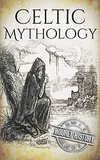Celtic Mythology: A Concise Guide to the Gods, Sagas and Beliefs (Greek Mythology - Norse Mythology - Egyptian Mythology - Celtic Mythology)
amazon.com
Saved by Emilie and
Celtic Mythology: A Concise Guide to the Gods, Sagas and Beliefs (Greek Mythology - Norse Mythology - Egyptian Mythology - Celtic Mythology)

Saved by Emilie and
The final possession was the Dagda’s Cauldron. This large domestic container would never run out of food, and all who sat at it would be satisfied. It was made by a druid named Semias and imbued with such power that its abundant supply of food fed any number of warriors; additionally, it could heal any wound and even restore life.
The Dagda or Eochaid-Ollathair, the progenitor and All-Father. He is the leader of the Tuatha dé Danann and the god of life and death, the sun, prosperity, regeneration, banquets, and magic.
The third treasure was Lugh’s Spear.
Aonghus (Angus Og, Aengus, or Oengus of the Bruig) is the very complex god of love, youth, beauty, music, protection of lovers, dream work, and creativity.
He played a magnificent and beloved harp with which he controlled the changing of the seasons and which would come to his hand when he called.
Beltane is the next seasonal festivity and is the origin of May Day. It is associated with Belenus, one of the sun gods; a purification ritual would implore the sun to release itself from its wintery death. It was also the start of the fighting season.
The Tuatha dé Danann, a mythical race of god-like beings with supernatural powers, came to Eire in the mists, or perhaps in a cloud, across the seas. They arrived with four magical possessions—treasures in fact—that played a significant part in Celtic mythology. The first was the Lia Fail, the Stone of Destiny, upon which all Irish kings would be
... See moreIt was about this time that the legendary tale Táin Bó Cúalnge took place, involving the lengthy war between Connacht and Ulster. It is known as the Iliad of Ireland and an appropriate place to end this timeline.
Maeve (Medb) is an exceptionally interesting deity, and also a historical figure as the Queen of Connaught.